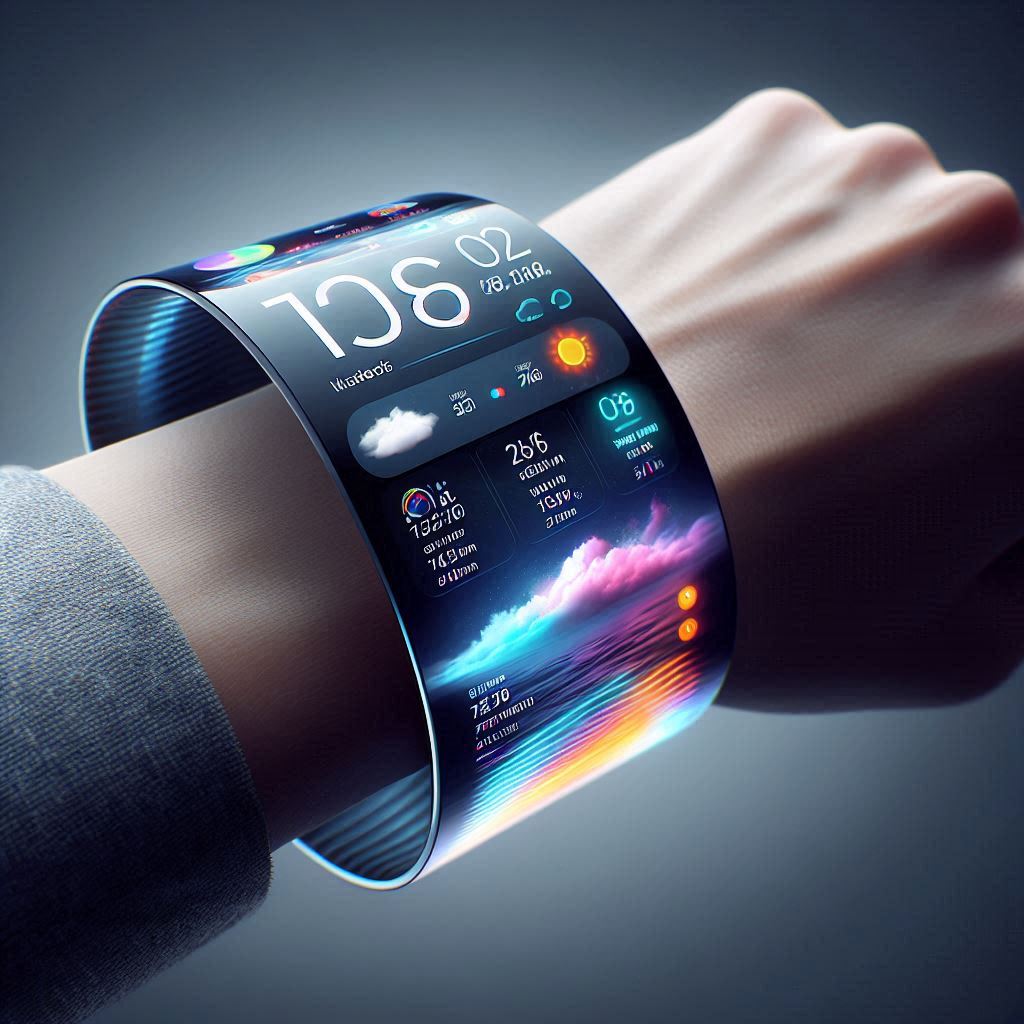Flexible displays stand out for their innovative form factor and potential to revolutionize how we interact with our devices. From foldable smartphones to rollable televisions, the technology behind these marvels is not just about flexibility but also requires high-speed design optimization to ensure seamless performance.
Foldable OLEDs: Engineering for Speed and Flexibility

Organic Light Emitting Diodes (OLEDs) technology has been a game-changer in the development of flexible displays, offering unparalleled color reproduction, deep blacks, and high contrast ratios. The transition from traditional to foldable OLED displays, however, presents unique challenges in high-speed design. One critical aspect is the design of the OLED panel itself to ensure it can withstand repeated folding without degradation in performance. Material science plays a vital role here, with the development of flexible substrates and encapsulation layers that protect the delicate organic compounds from exposure to air and moisture.
From the standpoint of high-speed design optimization, the integration and management of the flexible Printed Circuit Boards (PCBs) that connect the OLED panel to the device’s main board are crucial. These circuits must be designed to maintain integrity and performance despite the stresses of bending. Techniques such as the use of flexible polyimide films and the strategic placement of connectors and components are employed to mitigate the effects of mechanical stress.
MicroLED Arrays
MicroLED technology is another frontier in flexible display technologies, known for its potential to deliver displays with high brightness, energy efficiency, and long lifespan. MicroLEDs consist of arrays of microscopic LEDs that can be individually controlled to create images with exceptional brightness and contrast levels. When it comes to flexible displays, microLEDs offer the advantage of being fabricated on flexible substrates, allowing for a wide range of display shapes and forms.
For high-speed design optimization within microLED arrays, the challenge lies in managing the data transmission to these tiny LEDs. Given the massive number of microLEDs present in a single display, ensuring each LED receives the correct signal at the right time is a monumental task. Advanced driver IC integration techniques come into play here, with the need for driver circuits that can efficiently multiplex signals and provide the right current levels to each microLED. The development of low-latency protocols for data transmission between the microLEDs and the driver ICs is essential to achieve high refresh rates necessary for smooth video playback and responsive user interfaces.
Driver IC Integration Techniques for Enhanced Performance
Driver Integrated Circuits (IC) are the backbone of high-speed design in flexible display technologies. These ICs serve the critical function of translating data from the device’s processor into signals that control the display’s pixels. For both foldable OLEDs and microLED arrays, the integration of driver ICs requires a balance between speed, efficiency, and flexibility.
One approach to optimize driver IC integration is through the use of Chip-on-Flex (CoF) technology. CoF involves mounting the driver IC directly onto the flexible substrate, reducing signal path length and thereby increasing data transmission speed. This setup also contributes to the overall flexibility of the display by minimizing the rigidity that traditional chip mounting methods can introduce.
In addition to physical integration techniques, the software driving these ICs is also subject to optimization. Algorithms that efficiently manage power consumption and heat dissipation are crucial, especially in high-end devices where high refresh rates are common. Such software optimizations improve the longevity of the display and also ensure consistent performance across a range of operating conditions.
Navigating the Challenges of High-Speed Data Transmission
High-speed data transmission is the linchpin of performance in flexible display technologies. The bandwidth requirements for driving high-resolution foldable OLEDs and microLED arrays are substantial. Meeting these requirements demands a multi-faceted approach, incorporating both hardware innovations and software protocols designed for efficiency and speed.
One notable challenge in this arena is the susceptibility of flexible circuits to electromagnetic interference (EMI), which can degrade signal integrity and reduce data transmission rates. To counteract this, designers employ EMI shielding techniques, such as the use of conductive materials in the display’s construction, and differential signaling methods that reduce susceptibility to interference.
The adoption of advanced display interface standards like DisplayPort and HDMI 2.1 enables higher data transmission rates, supporting not only higher refresh rates but also features like dynamic HDR for enhanced visual quality. The implementation of these standards in flexible displays requires careful consideration of connector design and the integration of signal conditioning hardware to maintain high-speed signal integrity over flexible connections.
Ensuring Durability and Longevity
While optimizing for speed and flexibility, the longevity of flexible displays cannot be overlooked. The constant stress on materials and components due to bending and flexing demands a design approach that prioritizes durability without compromising performance. This involves a holistic view of the display, from the choice of flexible substrates and encapsulation materials to the design of the circuitry that powers the display. Techniques such as stress testing and simulation modeling are indispensable tools in predicting how displays will perform over their expected lifespan, allowing designers to make informed choices in materials and construction methods.
High-speed design optimization emerges as a critical area of focus. The intricacies of crafting foldable OLEDs and microLED arrays that not only flex but also deliver exceptional performance are vast. Through innovative driver IC integration techniques and a keen eye on the challenges of high-speed data transmission, designers are paving the way for a future where flexible displays become commonplace. As this technology continues to evolve, so too will the strategies for optimizing speed, efficiency, and flexibility, ensuring that the flexible displays of tomorrow are not only visually stunning but also robust and responsive.